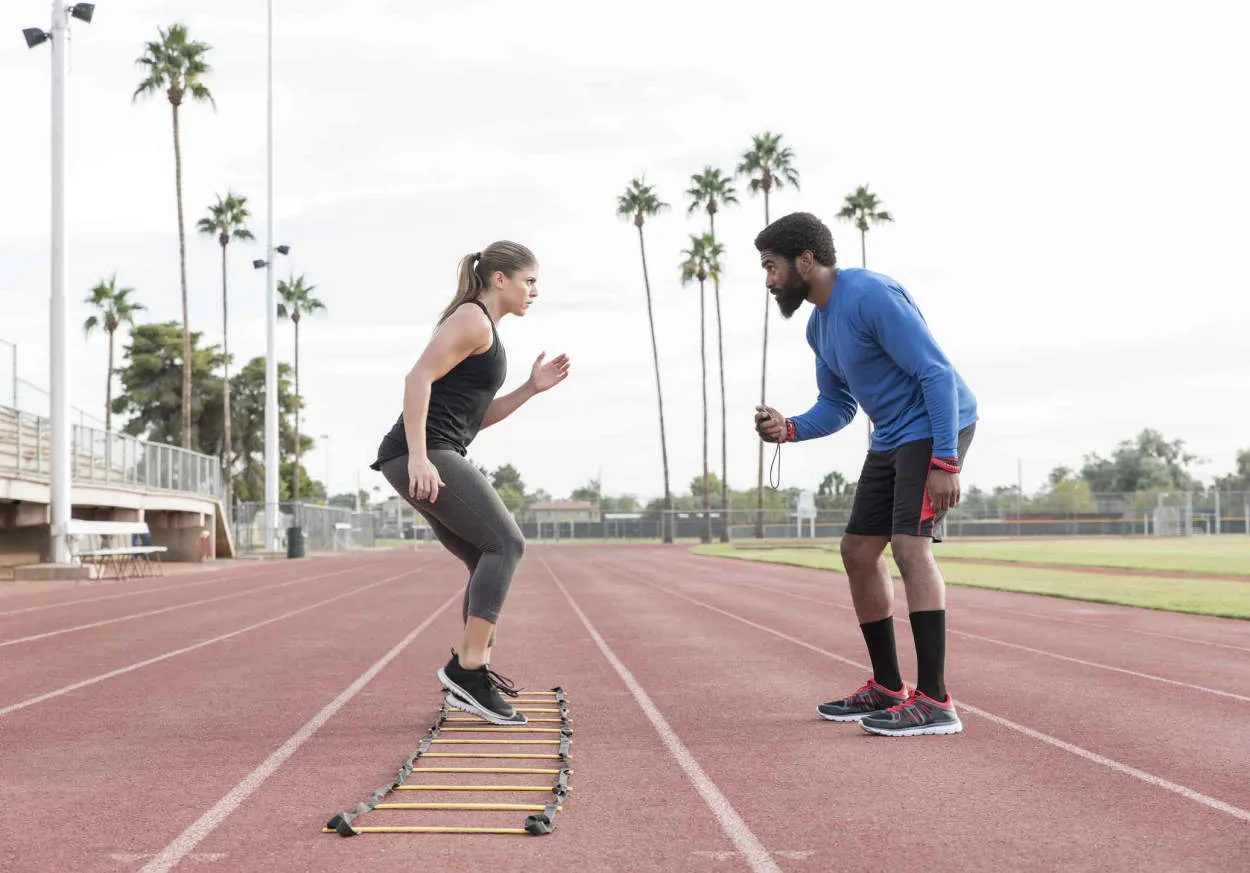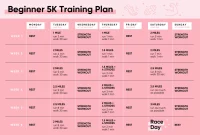Developing agility is crucial for athletes looking to improve their performance. In this article, we will explore key exercises and drills that can help athletes enhance their agility, including ladder drills, cone drills, and reaction drills. By incorporating these exercises into their training routine, athletes can develop quickness, improve coordination, and enhance their ability to change direction swiftly on the field or court.
Importance of Agility in Sports
Agility is a vital component in sports performance and is highly valued in various athletic disciplines. It refers to the ability to quickly change direction, move fluidly, and react swiftly to different situations. Developing agility can significantly enhance an athlete’s overall performance and contribute to their success in the field.
Enhanced Performance
Agility training plays a crucial role in enhancing an athlete’s performance. It allows athletes to quickly adapt to the dynamic nature of their sports, helping them gain a competitive edge. Improved agility enables athletes to change direction rapidly, accelerate, decelerate, and maintain balance efficiently, leading to better performance in both offensive and defensive situations.
Injury Prevention
By focusing on agility training, athletes can also reduce the risk of injuries. Quick, controlled movements with proper body mechanics enhance the stability and strength of muscles, tendons, and ligaments. This, in turn, helps in reducing the chances of strains, sprains, and other injuries commonly associated with sports that require sudden changes of direction.
Improved Coordination and Balance
Agility exercises contribute to improved coordination and balance. Athletes who engage in regular agility training develop better body control and spatial awareness. The ability to maintain balance while executing rapid movements becomes ingrained, resulting in improved overall coordination on the field or court.
Sharper Cognitive Skills
Agility training not only benefits physical attributes but also enhances cognitive skills. The rapid decision-making process required during agility drills helps athletes improve their mental alertness, reaction time, and ability to think quickly under pressure. These transferrable skills are valuable in various aspects of sports, enabling athletes to make split-second decisions and outperform their opponents.
Key Exercises and Drills for Developing Agility
There are numerous exercises and drills designed specifically to enhance agility in athletes. These include ladder drills, cone drills, shuttle runs, lateral movements, and reactive training exercises. Incorporating a variety of these exercises into training routines can provide a well-rounded agility development program for athletes of all sports.
In conclusion, agility is a critical attribute for athletes across various sports disciplines. It contributes to enhanced performance, injury prevention, improved coordination and balance, as well as sharper cognitive skills. By incorporating agility exercises and drills into their training programs, athletes can unlock their full potential and excel in their respective sports.
Top Agility Drills for Athletes
When it comes to developing agility, athletes need to focus on specific drills that target their agility skills. By incorporating these top agility drills into your training routine, you can enhance your speed, quickness, and overall performance in your sport.
1. Ladder Drills
Ladder drills are excellent for improving footwork, speed, and coordination. Set up a speed ladder on the ground and perform drills such as ladder runs, lateral jumps, and high knees through the ladder.
2. Cone Drills
Cone drills are simple yet effective for enhancing agility. Set up cones in different formations and practice quick changes of direction, side shuffles, and figure-eight runs around the cones.
3. Plyometric Exercises
Plyometric exercises, such as box jumps and lateral bounds, help athletes improve their explosive power and reaction time. These exercises focus on explosive movements and are beneficial for sports that require sudden bursts of speed and change in direction.
4. Agility Hurdles
Agility hurdles are great for improving agility and coordination. Set up a series of hurdles at varying heights and practice jumping over them with quick feet, maintaining balance and control.
5. Shuttle Runs
Shuttle runs involve sprinting back and forth between two points, mimicking the demands of many sports. This drill helps athletes improve their acceleration, deceleration, and change of direction.
By incorporating these top agility drills into your training routine, you can take your athleticism to the next level. Remember to focus on proper form and technique to maximize the benefits of each drill. Keep practicing and pushing yourself to improve, and you’ll see significant progress in your agility and performance as an athlete.
Incorporating Agility Work into Regular Training
Agility training is an essential component for athletes looking to improve their overall performance. By incorporating agility work into regular training routines, athletes can enhance their speed, coordination, and reaction time. Here are key exercises and drills that can be included to develop agility:
1. Ladder Drills
Utilizing an agility ladder, athletes can perform various footwork exercises to improve their quickness and agility. Examples include high knees, lateral shuffles, and in-and-out drills.
2. Cone Drills
Setting up cones in different formations enables athletes to work on their change of direction abilities. Zig-zag runs, figure-eight patterns, and T-drills are effective cone-based agility exercises.
3. Plyometric Exercises
Plyometric exercises, such as box jumps and depth jumps, are excellent for enhancing explosiveness and power. These exercises focus on the stretch-shortening cycle of muscles, improving an athlete’s ability to quickly generate force.
4. Reaction Drills
Reaction drills involve responding to visual or auditory cues. This can include partner-based drills, where one athlete signals another to perform a specific movement or change direction rapidly.
5. Sports-Specific Agility Drills
Athletes should incorporate agility drills that mimic movements specific to their sport. For example, basketball players can benefit from lateral quickness drills, while soccer players may focus on agility exercises that involve dribbling with the ball.
Remember, incorporating agility work into regular training should be done progressively and tailored to individual capabilities. Start with basic exercises and gradually increase intensity and complexity to avoid overuse injuries and optimize results.
Measuring and Tracking Agility Progress
When it comes to developing agility in athletes, measuring and tracking progress is crucial. Whether you’re a coach, trainer, or an athlete yourself, understanding the effectiveness of your training methods is essential for optimizing performance. Here are some key ways to measure and track agility progress:
1. Time-Based Drills
One common method is to use time-based drills to assess agility improvement. Set up a course that requires quick changes of direction, such as a ladder drill or cone drill, and time how long it takes the athlete to complete it. Regularly repeating these drills while tracking the times over weeks or months can provide valuable insights into progress.
2. Reaction Speed Tests
Agility is closely tied to reaction speed. By conducting reaction speed tests, you can evaluate how quickly an athlete responds to visual or auditory cues. This can be done through computer-based tests or using specialized equipment designed for this purpose. Monitoring reaction speed over time can indicate improvements in agility.
3. Sport-Specific Performance Metrics
For athletes involved in specific sports, it is important to consider sport-specific performance metrics. This could include measurements like change of direction speed, cutting ability, or lateral movement proficiency. By regularly assessing these metrics through practical drills and tests, you can determine an athlete’s agility progress within the context of their sport.
Remember to keep accurate records and organize the data in a meaningful way. This will allow you to spot trends, identify areas of improvement, and make necessary adjustments to training programs.
In conclusion,
Measuring and tracking agility progress is vital for athletes and coaches seeking to enhance performance. By implementing time-based drills, reaction speed tests, and sport-specific performance metrics, you can monitor progress effectively. Understanding an athlete’s agility improvements enables targeted and tailored training programs, leading to enhanced performance on the field or court.
Agility Training Success Stories
In the world of sports and athletics, agility is a crucial skill that can make a significant difference in performance. Many athletes have dedicated themselves to agility training and have seen remarkable success in their respective fields. Here, we highlight a few of these inspiring agility training success stories.
Serena Williams – Tennis Champion
Serena Williams, an iconic figure in the world of tennis, attributes her agility to her intense training regimen. By focusing on agility drills and incorporating exercises such as ladder drills, cone drills, and lateral shuffles into her routine, Williams has been able to swiftly maneuver the tennis court, outmaneuver her opponents, and win numerous Grand Slam titles.
Lionel Messi – Football Superstar
Lionel Messi, widely regarded as one of the greatest football players of all time, is known for his incredible speed and agility. Through years of dedicated training, including ladder exercises, agility ladder drills, and quick footwork exercises, Messi has been able to accelerate, change direction, and weave through the toughest defenses effortlessly, leaving spectators in awe.
Simone Biles – Gymnastics Phenomenon
Simone Biles, an American gymnast who has shattered records and won numerous medals, has achieved her extraordinary agility through rigorous training. By incorporating various drills such as balance beam drills, plyometric exercises, and quick reaction drills into her routine, Biles has been able to perform gravity-defying flips, twists, and turns with remarkable precision and grace.
Ryan Garcia – Boxing Sensation
Ryan Garcia, a rising star in the world of boxing, has showcased exceptional agility inside the ring. Through intense training, including agility ladder exercises, jump rope drills, and shadowboxing, Garcia has developed lightning-fast reflexes, footwork, and defensive skills, enabling him to dodge punches and deliver powerful counterattacks with lightning speed.
These success stories are just a glimpse into the incredible achievements that can be attained through agility training. Athletes from various sports have consistently demonstrated that by incorporating specific exercises and drills into their training routines, they can enhance their agility and elevate their performance to new heights.
Conclusion
In conclusion, developing agility in athletes is crucial for enhancing performance in sports. Incorporating key exercises and drills specifically designed to improve agility can greatly benefit athletes by increasing their speed, quickness, and overall body control. By consistently practicing these exercises, athletes can enhance their agility and become more competitive in their respective sports.




